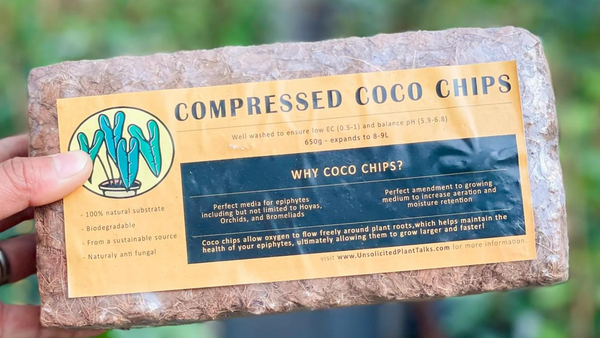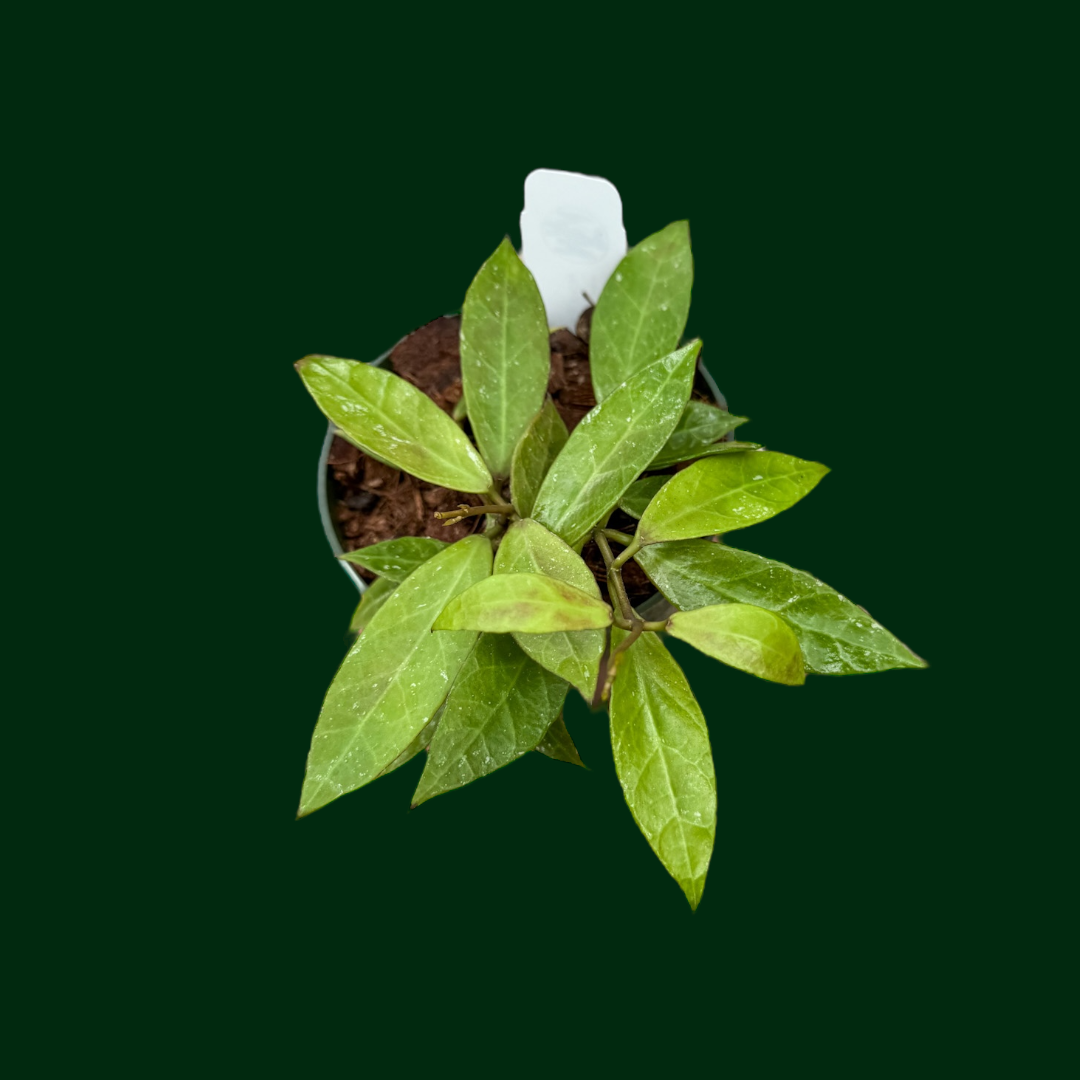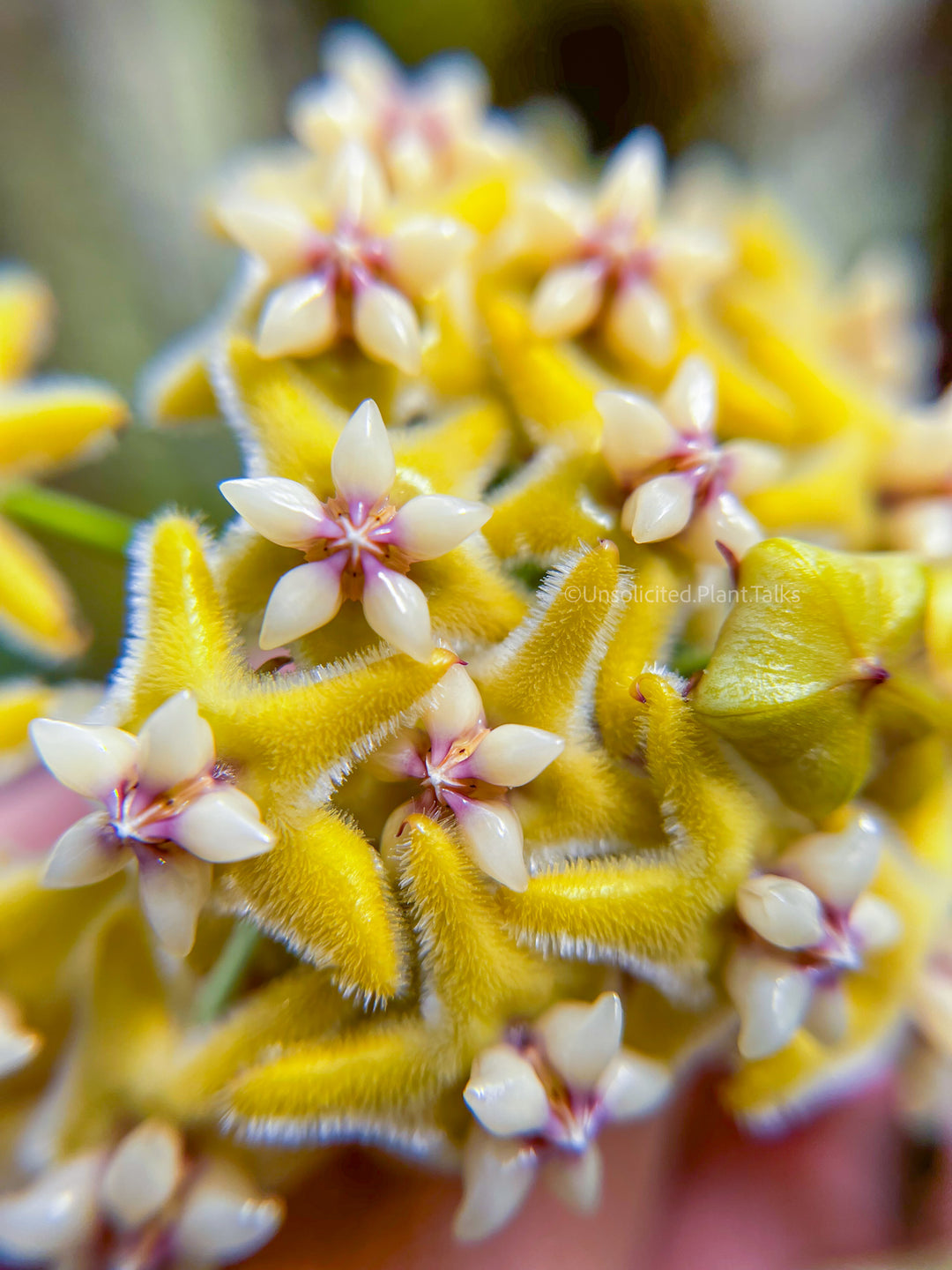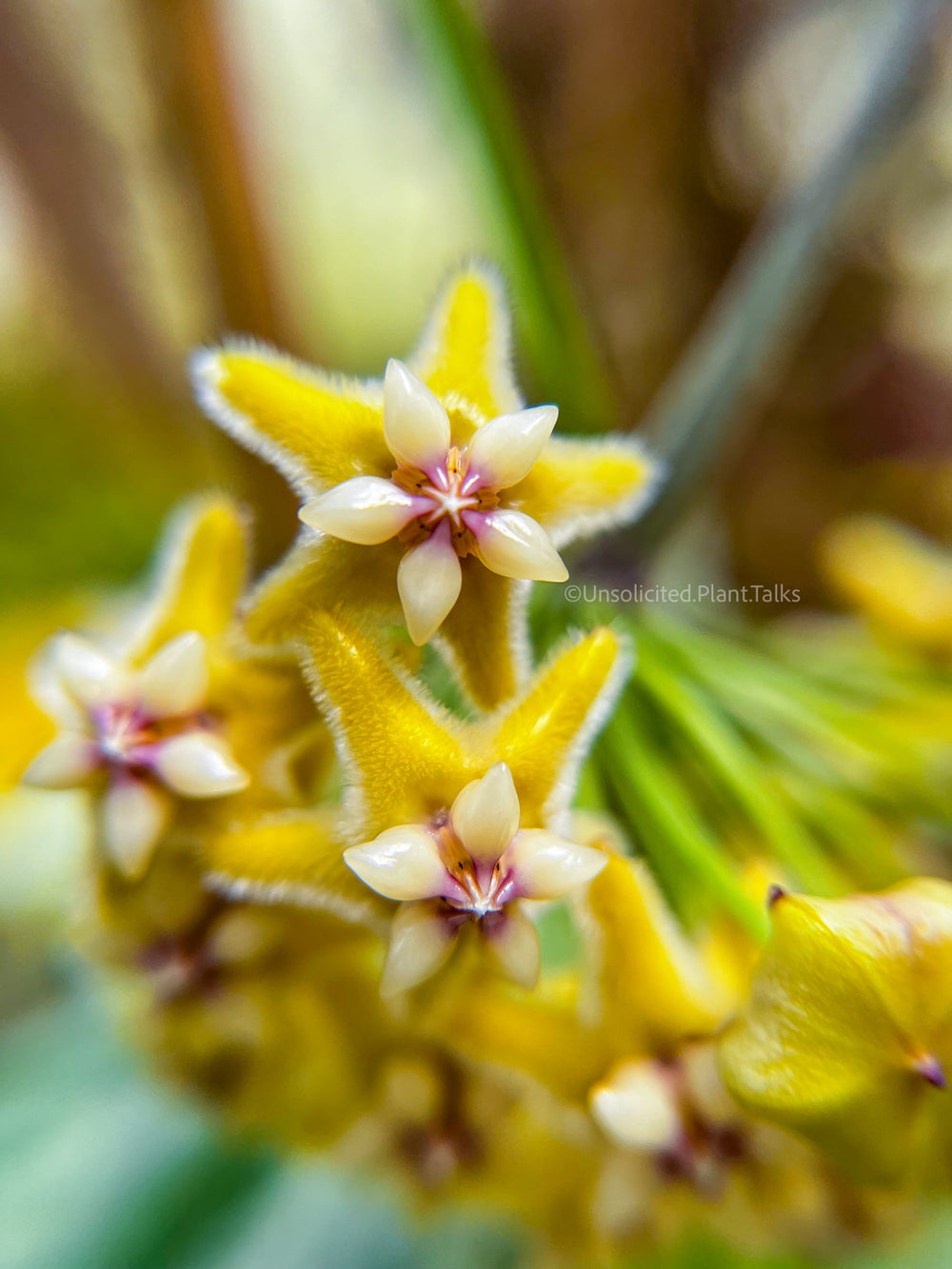The Benefits of Coconut Husk as a Growing Medium

Table of Contents
- What is Coco Husk?
- What are the Benefits of Coconut Husk in Plant Care?
- Are Coconut Husk and Coconut Coir the Same?
- Using Coconut Husk for Plant Care
- How to Use Coco Husk - Our Approach
- How to Fertilize when Using Coco Husk
- How we Source Our Coco Husk
- Conclusion
If you're a plant enthusiast like me, chances are good that you've heard the enthusiasm surrounding coco husk. But if you're new to plants, allow me to highlight the advantages of coconut husk as a growing medium (also known as a substrate), while providing helpful tips on how and when to use it.
Not only does this material offer wonderful benefits when caring for your houseplants, it is also suitable for hydroponic systems or soil-based gardens outdoors! Its our preferred substrate for hoya and aroid care - we love it so much that we sell our own coco husk as well!
What is Coco Husk?
Coco husk is an organic material derived from the fibrous hulls of coconuts. Because it is highly porous, it can be used in both hydroponic gardening systems and soil-based gardens to improve drainage and air circulation.
Utilizing this material has become increasingly popular in horticulture, as it can provide several beneficial advantages for our Hoyas, as well as other house plants.
What are the Benefits of Coconut Husk in Plant Care?

Coco husk offers you a lot more control over your plant's environment in many ways:
- Absorbent - One of the most notable advantages of coco husk is its ability to help retain moisture. This material absorbs water and becomes hydrated when exposed to it, which helps keep the roots of your plants moist, not soaking wet.
- Improved Drainage and Aeration - Coco husk's high porosity helps prevent standing water and root rot, both of which can be detrimental to your plants. It also allows more oxygen to reach the plant’s roots, promoting healthy growth.
- Low Nutrient Content - Unlike traditional soil, coconut husk and coir reduce the chances of over-fertilizing your plants and causing any toxic buildup.
Are Coconut Husk and Coconut Coir the Same?
Short answer: not exactly. Unfortunately, this naming system can get confusing. Here's a quick guide on other coco products, and how to find what you're looking for.
Coco Fiber

Coco fiber is more processed than husk, with a texture more like hair. It holds more moisture than husk. NOTE: Coco Fiber is also sold as "Coco Coir," so make sure you're getting the right substrate!
Coco Coir

While they are both beneficial for plant care, peat tends to retain the most moisture. It is highly processed and looks a lot more like dirt. NOTE: Coco Coir is also sold as "Coco Peat," so make sure you're getting the right substrate!
Using Coconut Husk for Plant Care

Many tropical houseplants, such as Hoyas and Aroids, tend to thrive in humid conditions with plenty of light, but they can also be sensitive to waterlogging.
Therefore, it’s important to choose a potting mix that has adequate drainage while still providing enough moisture.
Coco husk is an excellent choice because it provides beneficial air spaces which help improve drainage, aeration, and water retention.
How to Use Coco Husk - Our Approach

You can find numerous practical ways to use coco husk for your indoor plants. We'll provide creative ideas on ways in which you could incorporate husks into your growing media - enabling you to tackle any difficulties that come up while cultivating at home in your unique environment.
100% Coco Husk: Pros and Cons
Initially, we relied solely on coco husk to cultivate our plants. We use UPT Coco Husk compressed bricks that were expressly tailored for horticultural applications – they had been washed and their salt content was reduced to make them more suitable for the plants.
Pros: Great in a Warm, Humid Climate
Our ongoing warm and moist climate makes it the perfect environment to cultivate plants in pure Coco Husk. The hoyas in our nursery flourished significantly due to this method!
When comparing these new hoyas with those grown using a blend of perlite, bark, and soil (which also has excellent aeration), there was an undeniable difference in growth rates between the two groups.
Cons: Transition Challenges
Despite the success of our endeavors, challenges still arose when our plants had to adapt and grow in foreign environments different from the ones they were acclimated to.
Our clients voiced their concern that the husks dried too quickly and didn't absorb water without frequent tending.
Understanding our mission to simplify plant maintenance, not add labor for our customers, we set out to create a better mixture suited for regular home conditions.
Through further experimentation, we developed an optimal solution!
Our Substrate Solution: A Blend of Husk and Peat
Currently, we are utilizing a blend of 75% coco husk and 25% coco peat.
Coco peat is becoming more common due to its incredible capacity to absorb and retain water. This makes it much more effective than standard soil as a growing medium, since it has little weight while drying quickly, allowing sufficient oxygenation around plant roots in no time.
This leads to more robust plants with less irrigation needed - a perfect fit for the home environment where hobbyists don't want to worry about overwatering or rotting roots.
Moreover, this medium ensures proper aeration which is essential for Hoya cultivation; it also dries out faster than soil meaning you can spend your energy on cultivating beautiful species and cultivars instead of worrying about root rot!
A Note for New Buyers: Always Keep Environment in Mind
While this blend of substrates has worked wonderfully for our company and clients, it doesn't necessarily guarantee success in every situation. Depending on the environment, you may need to adjust ratios accordingly:
- If your mixture is drying up too quickly, add more peat.
- If there's an excess amount of humidity, switch to a ratio with greater amounts of husks and lesser portions of peat instead.
Additionally, be sure to keep an eye out for any pests or diseases that may develop over time due to the high humidity levels associated with using coco husk.
How to Fertilize when Using Coco Husk

Fertilizing is key when nurturing your plants, and even more critical if you're using coco husk as a medium because it doesn't provide all the needed nutrition. To guarantee optimal growth for your plants, supplementing with fertilizer is non-negotiable.
Fertilizer Types
When fertilizing with Coco Husk, it’s important to use one that specifically caters to the following:
- Plant Species - Different plants require different nutritional needs, so choosing the right type of fertilizer is key to helping them thrive.
- Correct Dosage - We recommend to start at lower doses when fertilizing because adding too much can cause nutrient burn and damage delicate roots. For this reason, it's best to opt for liquid or water-soluble fertilizers as opposed to granular ones; they are easier to control and disperse throughout the soil evenly without overfertilizing any particular area.
Fertilizing Techniques
To help your houseplants thrive, there are a variety of fertilizing techniques you can use. Here are some great options:
- Foliar Fertilization: This method involves spraying fertilizer directly onto the leaves of plants
- Direct Root Injection: This is where a fertilizer solution is injected directly into the soil surrounding the roots of a plant
- Surface Application: Applying fertilizers to a plant’s growing medium on top or near its root system
Personally, We are a big fan of foliar application when using coco husk for a few reasons:
- Fast Absorption - Coco Husk tends to dry out quickly, so it's important that all the plants get their fertilizer before the medium dries up completely. This is where foliar application comes in handy as it delivers nutrients directly onto leaves.
- Time Saver - This method reduces the amount of time needed to apply fertilizers since you don't have to mix them into your soil - an added bonus!
- Reduces Waste - Foliar application means less runoff, creating a more controlled environment where plants can get enough nutrients without over-fertilizing any particular area.
- Increased Nutrient Balance and Control - Foliar fertilization helps a lot when the roots are struggling due to conditions such as infection or soil compaction. It helps restore balance of nutrients in an efficient way, while also promoting proper plant development with minimal effort on your part.
Fertilizers and pH
When fertilizing your plants, make sure you monitor the pH level of your growing medium closely as well. This is because certain nutrients are more readily available for uptake by plants in different pH levels.
Generally, a pH level of between 5.5 and 6.5 is best for most horticultural crops, as this is the optimal range for nutrients to be absorbed by plants.
For best results, you should ensure that your pH level is within the ideal range before fertilizing. If not, a simple adjustment of sulfur or lime can be done to make your medium less acidic, and suitable for planting. Be sure to use the right type of fertilizer and avoid over-fertilizing, as this can have detrimental effects on your plants.
How we Source Our Coco Husk

The coco husk in our shop is sourced ethically and responsibly, with conservation in mind.
We ensure that our coco husks are harvested sustainably, without damaging the natural environment.
Our coco husks are also prepared to a high standard specifically for use in gardening and planting projects. The husks are aged properly and rinsed thoroughly to remove any salt buildup, resulting in an ideal growing medium for plants.
When you buy from us, you can be sure that your purchase was made from the highest quality material that has been sourced with both ethics and conservation in mind!
Conclusion
For the best possible care of your precious plants, you need to look no further than Coco husk potting mix. This special mixture offers superior drainage and air circulation as well as a nutrient content that reduces the risk of root rot—all tailored to meet your specific needs! Don't forget - usage of this soil is sure to guarantee optimal growth and bloom for your lovely houseplants.
Want to learn more about how we use coconut husks? Check out our video below:












